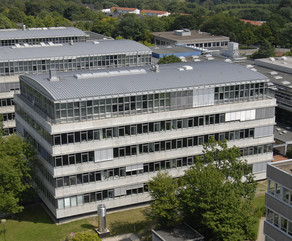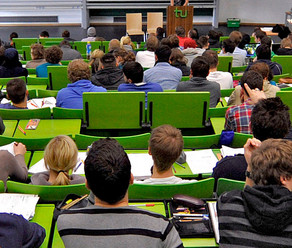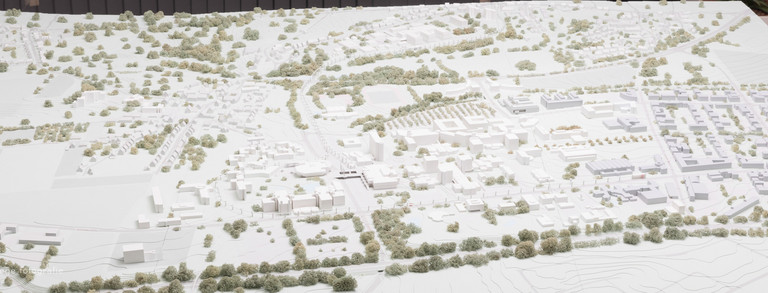M 04 Quiet Routes and Microtexturing in Noise Exposed Residential Areas of Dortmund
Beschreibung
Problem: Noise exposure is known to cause a number of negative human health outcomes (Gidlöf-Gunnarson and Öhrström, 2007; END, 2002) and increased noise-related psychological annoyance (Cerletti et al, 2020). However, provide a respite of green space as quiet areas (Heinrichts et al., 2018) can lead to an improvement of percieved restorative benefits even in areas that continute to be permeated by low level noise (Payne et al., 2019). The upcoming fourth noise action plan (34.BlmSchV, 2006) for Dortmund proposes a distribution of potential quiet areas based on EU and German Guidelines (EEA, 2014; Heinrichts et al., 2018). However, this plan finds that a gap in the supply of quiet areas exists for certain spatial definable residential areas in Dortmund that remain exposed to noise and do not have a sufficient supply of quiet areas within walkable access. In these places, the decision for noise action planning is to either leave these exposed populations to live without walkable access to quiet areas or to legally define quiet areas in locations where actual noise exposure is known to be over the defined quiet area threshold of 55dB(A), but is lower than the most noise polluted hot-spots.
Aim: This project aims to find a third way of dealing with this problem, where the creativity of spatial planners and urban designers is unleashed via creative solutions that shoot the gap in this wicked problem. The one semester M-project stands on two basic fundaments where:
- Residential populations in Dortmund that are exposed to noise over 55 dB(A) and do not have access to a quiet area within 500m are delineated given existing noise modelling (Frücht, 2023)
- Mitigation strategies to combat noise pollution in these areas is developed viamultiple tracts, including:
- Identifcation of additional quiet areas within 500m for all exposed populations that are not currently proposed in the upcoming 2025 Dortmund noise action plan.
- Increasing the directness of access to quiet areas for noise exposed populations through ‘quiet routes’ that thread their way through noise polluted areas to reach quiet areas.
- Finding ways to change the surface texture of the urban environment via ‘microtexturing’ that reduces reverberation and noise exposure to the maximum extent possible.
Methods: Students may use acoustical field studies to verify new quiet area placements, develop microtexturing concepts and model their effectiveness in ArcGIS to determine the extent that this strategy could be effective, or create new urban design interventions that reduce the pennetration of noise into residential areas. Students organize outputs as an integrated informal design proposal (informal landscape planning instrument) that documents all strategies together to illustrate solutions and synergistic effects.
Student Learning Objectives: Students learn the about noise and handling noise exposure in spatial planning via the formal instrument noise action planning. At the end of the M-project, participants area able to define noise pollution thresholds, identify noise exposed communities, collect sound data in the environment and determine if noise pollution is present, develop solutions to noise exposure via planning and design measures, and understand the limits and gaps of solviing this problem in the formal noise action planning instrument. Students demonstrate advanced methodological knowledge in the form of quantitative and spatial analysis, problem-oriented design solutions, in-depth knowledge of planning regulations related to sound and noise, and devleop / document solutions within a planning envelope.
References
34.BImSchV. (16.03.2006). Vierunddreißigste Verordnung zur Durchführung des Bundes Immissionsschutzgesetzes (Verordnung über die Lärmkartierung). Online verfügbar unter:https://www.gesetze-im-internet.de/bimschv_34/BJNR051600006.html.
Cerletti, P., Eze, I. C., Schaffner, E., Foraster, M., Viennau, D., Cajochen, C., ... & Probst-Hensch, N. (2020). The independent association of source-specific transportation noise exposure, noise annoyance and noise sensitivity with health-related quality of life. Environment international, 143, 105960.
EEA (2014). Good practice guide on quiet areas. Technical Report 04. Available online at www.eea.europa.eu/publications/good-practice-guide-on-quiet-areas, checked on 11/3/2021.
EU-Umgebungslärmrichtlinie. (25.06.2002). Richtlinie 2002/49/EG über die Bewertung und Bekämpfung von Umgebungslärm. Online verfügbar unter:https://eur-lex.europa.eu/LexUriServ/LexUriServ.do?uri=OJ%3AL%3A2002%3A189%3A0012%3A0025%3ADE%3APDF.
Frücht, A. (2023). Bericht über die Umgebungslärmkartierung der IV Stufe im Jahr 2022. Dortmund. Online verfügbar unter:https://www.dortmund.de/media/p/umweltamt/downloads_umweltamt/umgebungslaerm/Bericht_Umgebungslrmkartierung_der_IV_Stufe_im_Jahr_2022.pdf.
Gidlöf-Gunnarson, A., & Öhrström, E. (2007). Noise and well-being in urban residential environments: The potential role of perceived availability to nearby green areas. Landscape and Urban Planning, 115-126.
Heinrichs, E.; Leben, J.; Cancik P. (2018). Ruhige Gebiete - Eine Fachbroschüre für die Lärmaktionsplanung. Umweltbundesamt.https://www.umweltbundesamt.de/publikationen/ruhige-gebiete.
Payne, S. e. (2019). Exploring the Relationship between Urban Quiet Areas and Perceived Restorative Benefits. International Journal of Environmental Research and Public Health
Bemerkung
A digital pre-registration ('mood picture') takes place in the week before the commencement of lectures. The distribution to all offered M-projects and M-design studios will take place before the first class of the semester. Please follow the information on the homepage of the faculty
Nachweis
Individual grades will be awarded based on group work contributions and the quality of the final report and disputation.
Termine
Mo 08:30 - 11:45 wöch 16.10.2023 - 29.01.2024 GB III Raum 307
Mi 08:30 - 11:45 wöch 11.10.2023 - 31.01.2024 GB III Raum 307
Veranstaltungsnummer: 09202104
Studienfach: M.Sc. 1-2
Art: Seminar, max. Teilnehmer 8
Semester: WiSe 2023/2024
Zielgruppe: M.Sc.
Verantwortlich: Bryce Lawrence








